23.02.2024
White spot sustainably gone:O2 Telefónica builds first energy self-sufficient mobile communications site
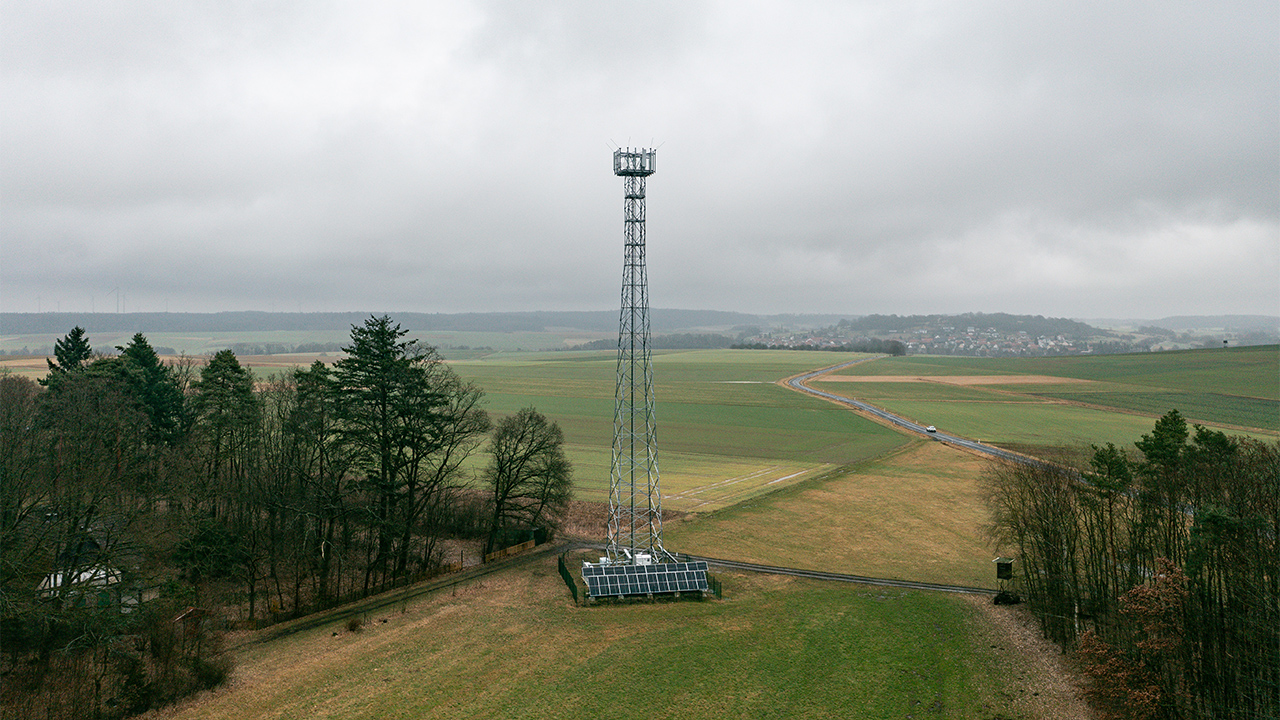
O2 Telefónica builds first completely energy self-sufficient mobile communications site
Premiere for the first completely self-sufficient radio tower from O2 Telefónica: With the mobile communications site in the Hessian town of Kirtorf, the mobile communications provider is closing one of the last white spots. Among other things, the 50-metre-high mast transmits with the modern 5G standard. Solar cells and a highly efficient fuel cell generate sustainable electricity on site - because the site does not have a conventional electricity connection.
The new mobile communications site in Kirtorf is located in the middle of agricultural and forestry land. There is no power supply for miles around. Laying a power line would exceed the cost of the site. The electricity connection is by far the most expensive part of it. O2 Telefónica has therefore developed a concept to supply the site completely self-sufficiently with climate-friendly energy.
Efficient and innovative supply of rural areas
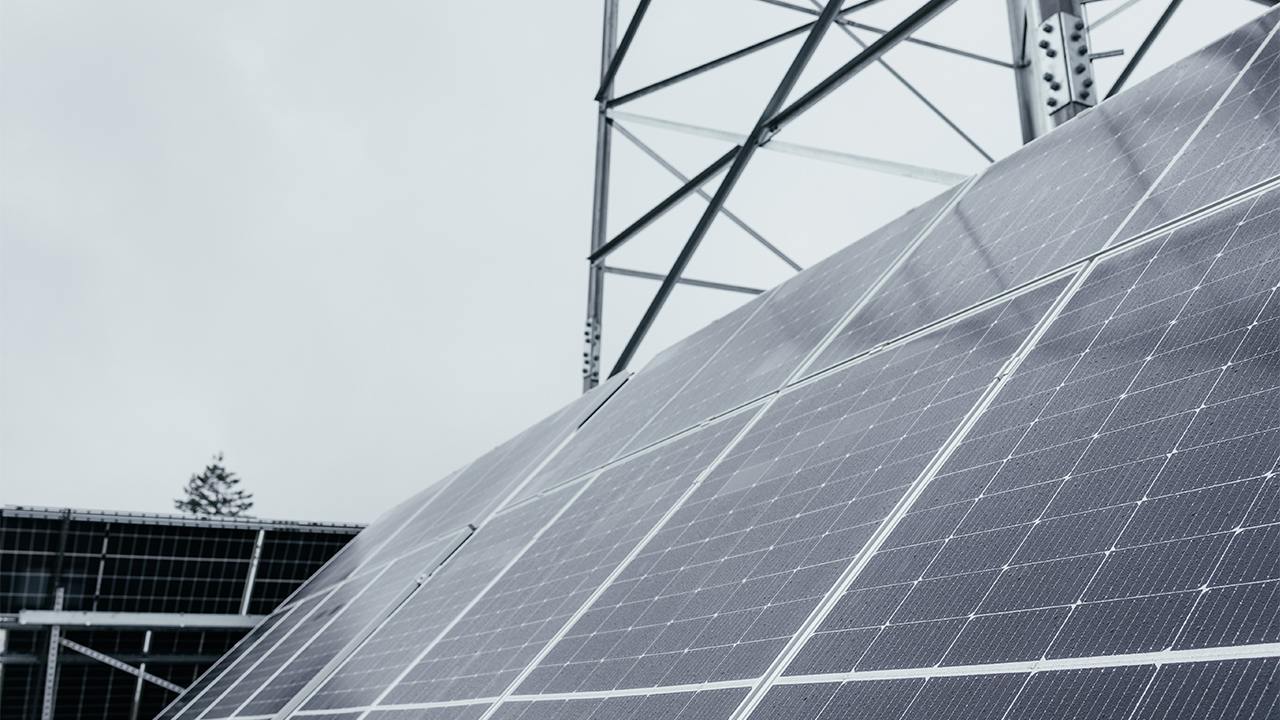
Photovoltaic modules installed next to the radio tower supply the primary energy for the system
Photovoltaic modules installed next to the radio tower supply the primary energy for the system. The electricity generated during the day is temporarily stored in lithium batteries to ensure round-the-clock operation. On days with little sunshine, a biomethanol fuel cell takes over the supply. Intelligent software ensures that the system automatically switches between the energy sources as required. The energy balance is impressive: As the electricity is generated on site, the new concept saves more than 13,000 kilowatt hours per year compared to a mobile phone tower powered by conventional electricity.
Local customers benefit from improved network coverage in the O2 network. Where there was previously a dead zone, they can now surf and make calls with 2G (GSM), 4G (LTE) and directly with the modern 5G standard. They will not notice in everyday life that they are being supplied by a special mobile site.
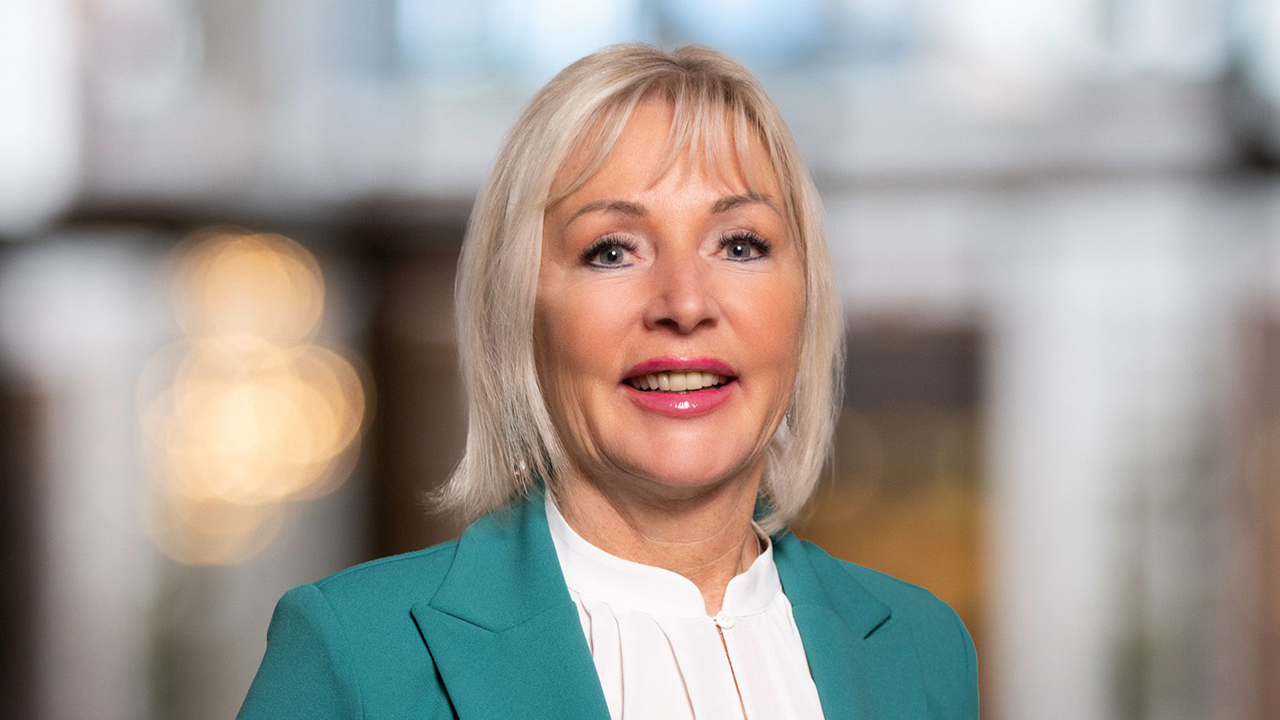
Digital Minister Prof. Dr Kristina Sinemus
Hesse's Digital Minister Prof. Dr Kristina Sinemus emphasizes: "Innovation meets climate protection here. State-of-the-art technologies will sustainably and noticeably improve mobile phone coverage in rural areas. As there is no need for a costly external power connection, mobile phone masts can be built much more quickly and more cost-effectively. And artificial intelligence adjusts the power supply when utilization and data capacity are low. This measure supports our resilience strategy for digital infrastructures and we therefore welcome this technology as a building block for it."
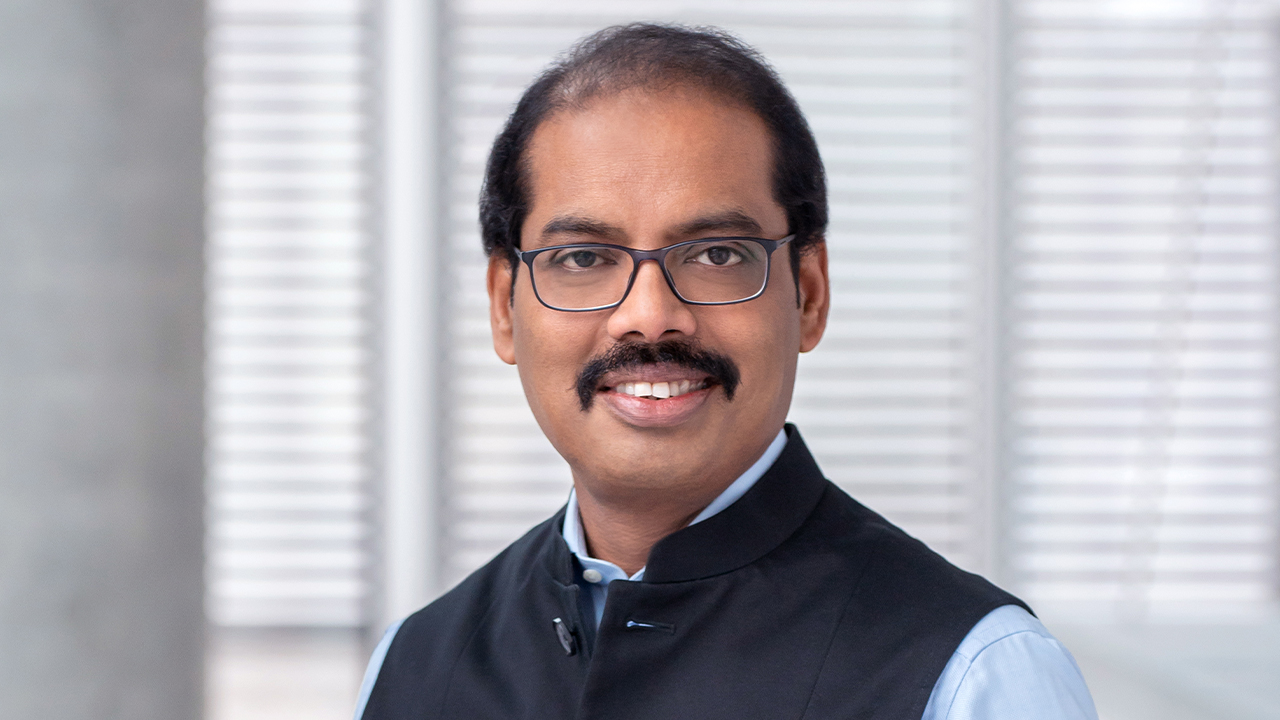
Mallik Rao
"Our new site in Kirtorf is a prime example of efficient mobile communications coverage in rural areas: a site without electricity, but with plenty of energy and 5G for our customers. The new concept shows how we can expand in an economically sensible way while protecting the ecosystem. We want to drive forward digitalization and provide everyone with mobile communications. To this end, we are closing the last white spots in the country, even if the development of the mobile infrastructure here is sometimes challenging." says Mallik Rao, Chief Technology & Information Officer of O2 Telefónica.
O2 Telefónica focuses on sustainable network expansion
O2 Telefónica is using photovoltaic systems at the first sites to provide part of the power supply. Back in 2011, the company tested for the first time in East Westphalia how transmission masts can be powered with the help of a wind turbine.
With the new energy self-sufficient site in Hesse, O2 Telefónica is now taking the next step and demonstrating how, in the event of a particularly difficult development, mobile phone coverage can also be managed completely without a conventional power connection. Nevertheless, conventional electricity connections have so far been indispensable for rapid nationwide network expansion and stable operation of the more than 28,000 mobile phone sites in the O2 network. O2 Telefónica has been operating its own mobile network with 100 per cent green electricity since 2016.
New technologies reduce electricity consumption
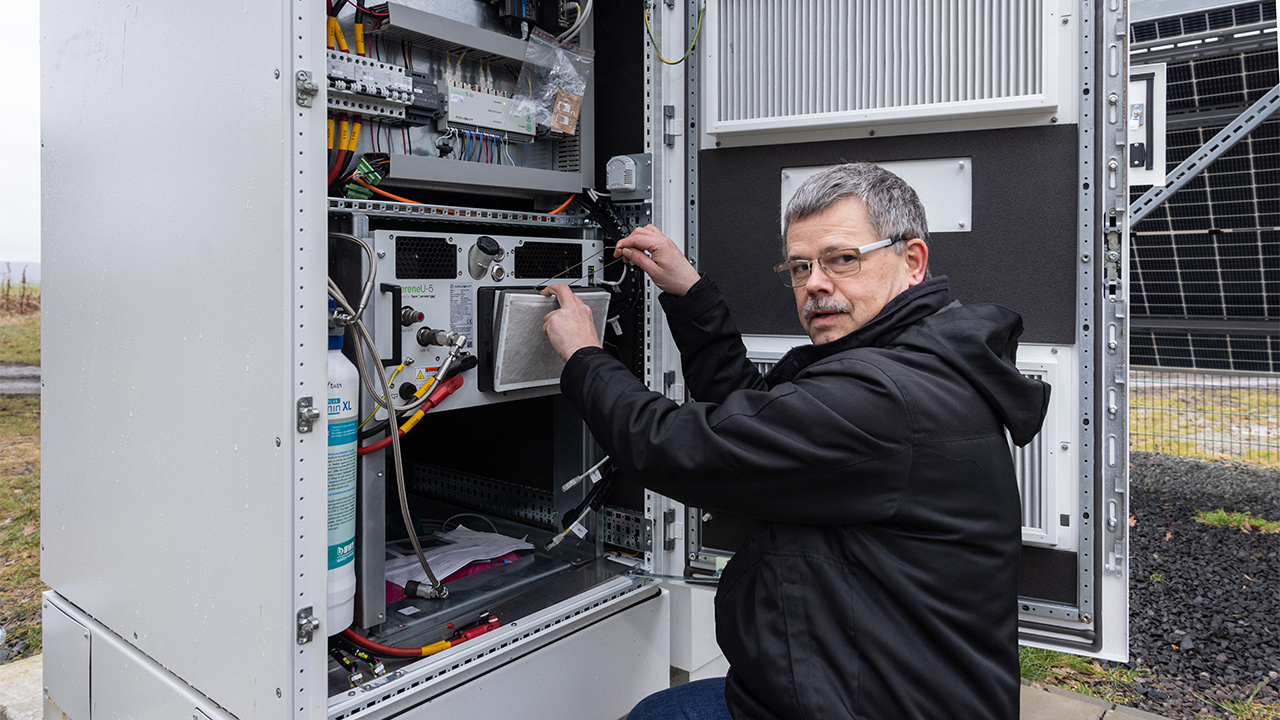
Dag Hüdepohl, Senior Engineer Infrastructure at O2 Telefónica, on the fuel cell
The company consistently relies on sustainable energy, new technologies and optimization measures to keep energy consumption as stable as possible and ideally even reduce it, despite the exponential increase in data usage by customers.
The expansion of the 5G network is one of the decisive factors. The fast mobile communications standard consumes up to 90 per cent less power per byte transported than previous generations. O2 Telefónica currently supplies around 95 per cent of the population with 5G. By the end of 2025 at the latest, the company aims to reach practically all German citizens with the modern mobile communications standard.
Further savings are made possible by artificial intelligence that controls antenna systems: it puts individual frequency bands at a mobile communications site into a power-saving mode when little data capacity is required - at night, for example. If demand increases, the additional frequency bands are reactivated.
Dag Hüdepohl and his team are equipping a radio tower in Kirtorf, Hesse, with solar cells and a fuel cell. In doing so, they are closing one of the last blank spots in the country.
Downloads
Written by: Florian Streicher
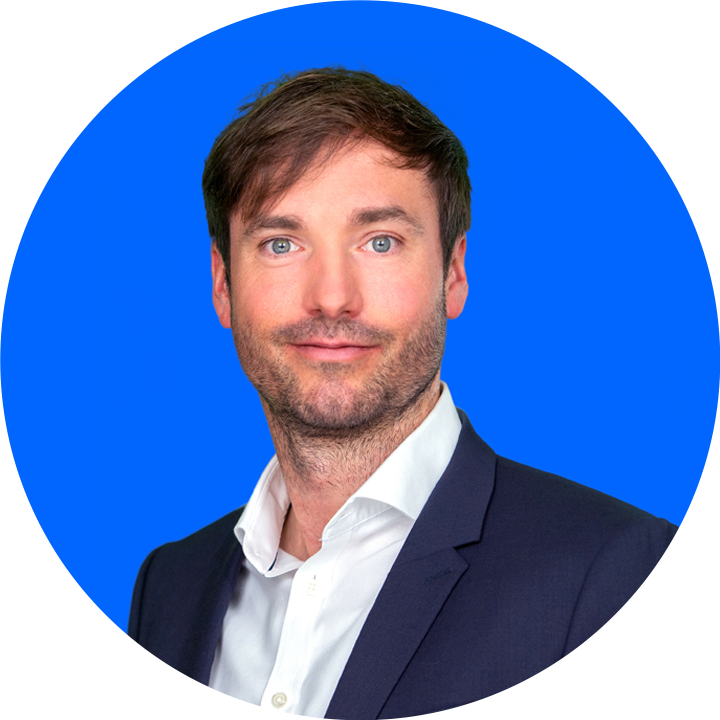
Florian Streicher ist Pressesprecher (Senior Media Relations Manager) für Technologie- und HR-Themen bei O2 Telefónica. Er ist seit 2017 in der Kommunikationsabteilung des Unternehmens tätig, wo er sich um die kommunikativen Schwerpunkte Netzausbau, 5G, IT, Technologie-Innovationen und Personalthemen kümmert. Zuvor war er in der Kommunikationsberatung tätig.
